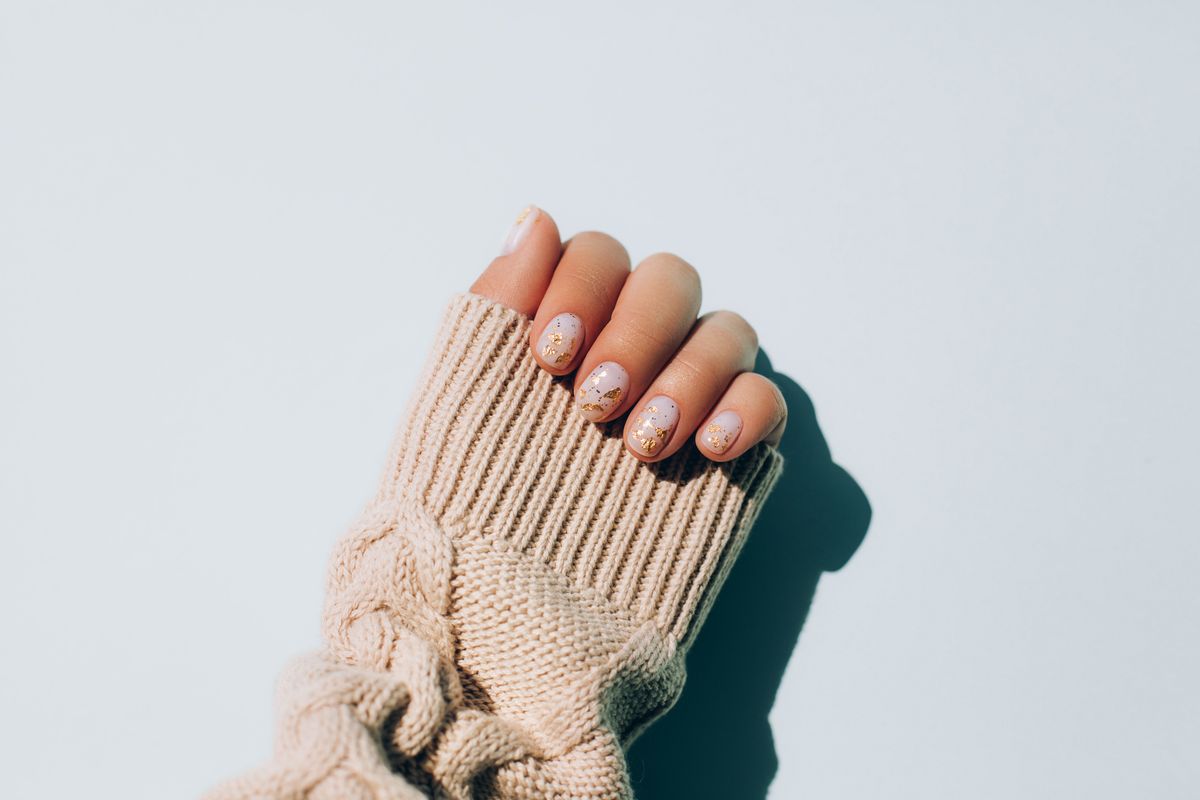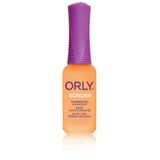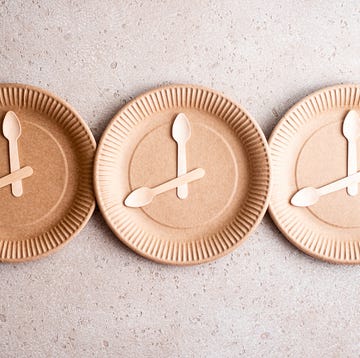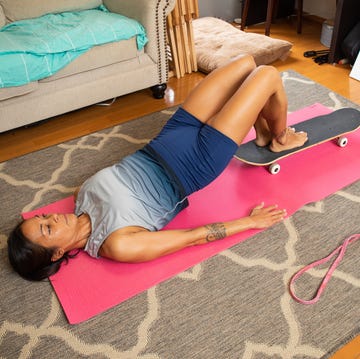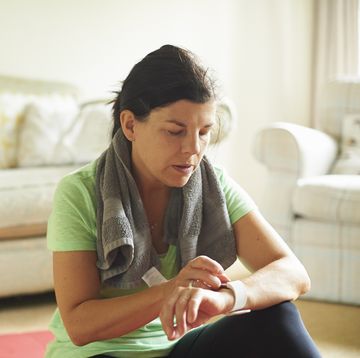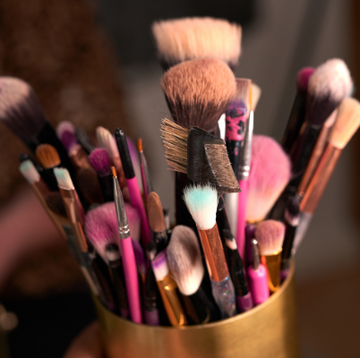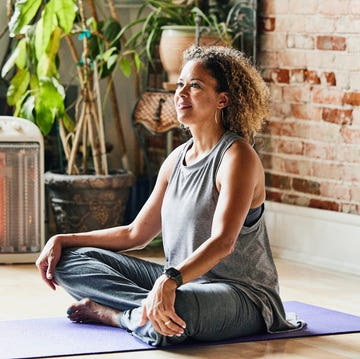While you may have mastered the order in which to apply your skincare (serum before moisturiser; retinol pre face oil) and solved your haircare conundrums long ago, chances are you still haven’t cracked the code when it comes to your nails. Like how to stop your DIY mani peeling off before you’ve even made it into the office… Or the secret to achieving the lustrous shine of a gel manicure without ravaging your nails in the process.
As a topic that’s still shrouded in mystery, we’ve called upon experts Juanita Huber-Millet, founder and creative director at Townhouse; Metta Francis, London-based, award-winning nail tech and founder of Nails by Mets, and nail polish expert and founder of Nailberry, Sonia Hully, to help debunk some of the common myths and misconceptions around nail treatments – plus the best solutions for a healthy-looking, long-lasting manicure.
So, are gel manicures actually bad for your nails?
Before we delve in, a quick refresher on gel treatments: if you’re used to hearing the term ‘Shellac’, that’s because they’re often used interchangeably. ‘Shellac was actually created by CND (and is their trademark) but it has come to be used to refer to similar products,’ says Juanita Huber-Millet. ‘Shellac is a hybrid gel polish that’s applied and cured similarly to gel polish with a LED lamp.’
The good news is that gel polish isn't bad for your nails provided it’s applied, looked after and removed correctly, says Metta Francis. ‘It's actually a great nail coating for (healthy) natural nails as it provides an additional layer of protection and strength; most people will find their nails grow much longer and they appear stronger when wearing gel polish because of this,’ she adds.
‘People who say that having gel polish or Shellac regularly ruins their nails have more likely experienced over-buffing of the natural nail prior to application (which can thin the nails over time) or aggressive removal which can leave micro-traumas on the nail plate or damage to the natural nails from gel polish or shellac being picked off or catching and coming off prematurely,’ she urges.
When applied and removed properly by a skilled nail technician, gel treatmemts are not harmful to your natural nails, agrees Huber-Millet. But where issues (cue the peeling, brittleness and cracking nails) may arise, she says, starts with using DIY nail lamps.
‘Since the pandemic, we’ve noticed a rise in the use of at-home gel kits and unlicensed gel products available online. Not only is there a concern around what chemicals might be in these products if these products are not applied correctly, they can be harmful to skin and nails,’ she warns.
It’s also important to note that gel treatments have come under a lot of scrutiny of late. A new study found that the UV lamps used for gels may cause damage to cells and increase the risk of cancer, however, more research is still needed.
Meanwhile, a lot of bad press, with dermatologists warning that these nail treatments may cause skin reactions, has left many wondering whether they’re actually safe. While the data continues to stack up, experts are also concerned about the influx of unqualified nail techs offering treatments without the skills of expertise to do so safely.
Does the nail salon you go to matter?
Short answer: yes. Though it can be tempting to opt for a cheaper treatment, if it looks too good to be true, it probably is. ‘I would always recommend going to a reputable nail salon or technician who uses their chosen gel polish brand correctly and in line with manufacturer guidelines,’ says Francis. ‘This usually means not mixing and matching different brands (e.g. same brand base coat, colour coats and top coats) and using the branded UV/LED lamp.’
Don't be afraid to ask the nail technician or salon what brand they use: ask them if it’s a well known brand and whether they’ve trained in the products, she says. Francis adds that while it’s easy to get lured in by a huge social media following or presence, this doesn’t guarantee the nail tech’s credibility, either.
‘Nail technicians who are members of professional organisations such as BABTAC or those who openly share their qualifications and credentials would have completed high level training. I would recommend clients use a BABTAC's T.I.M.E consumer awareness /regulatory checklist to help make an informed decision when choosing a nail salon and nail technician,’ she concludes.
It’s also important to check the ingredients list of products too, adds Huber-Millet. ‘At Townhouse we use products which are free from harmful substances such as formaldehyde, toluene and dibutyl phthalate. We also use hospital-grade autoclaves to sterilise our tools between each use, providing our customers with a clean and hygienic experience every time.’
How to look after gel nails between visits
We get it. A glossy gel manicure is hard to beat. And if you don’t want to sacrifice that shiny, IG-worthy aesthetic but you’re concerned about the health of your nails, there are a few preventative measures to consider. First off, Francis recommends using a cuticle oil ‘at least twice daily’ to help keep your natural nails and nail coating flexible and hydrated.
‘This is important as it means your gel polish is less likely to chip or crack as it will flex with your natural nail. It will also help to keep the cuticle area looking neat and tidy.’ She also advises wearing gloves if coming into contact with detergents (which could break down your gel polish) and to avoid prolonged contact with water.
‘This is because your natural nails will absorb the water, expand and become very soft. When dry, the nails will contract and this small movement can cause your gel polish to lift or chip off.’
Oh and one of the worst things you can do? Avoid picking off your gel polish (we’ve all been there). ‘Doing this will remove a very thin layer of your natural nail and leave it damaged,’ she adds. ‘This is because the gel polish bonds to your natural nail.’ Not only does this damage your nails, but it leaves them weaker, more brittle and prone to breakage in the future.
Alternative nail treatments to consider
There are few gel alternatives that still guarantee a similar level of shine and longevity. For instance, Hard Gel Extensions and Super Gel Overlay (BIAB) are safer and less damaging to your natural nails compared to traditional acrylics, says Huber-Millet.
‘These treatments use safe, non-toxic formulas that provide longer-lasting results, giving you beautiful nails that last.’ In fact, BIAB, which stands for 'builder in a bottle' (or builder gel) is applied in the same way as regular gel polish with a similar finish (although it has a thicker consistency) and actually helps improve the strength of your nails.
Then there’s standard polish. And if you find yours lasts a matter of minutes before it starts to peel or crack – and after all your hard work! – here’s what you can do. ‘Wipe your natural nails with alcohol or acetone prior to painting your nails,’ says Francis.
‘This will help cleanse your nails and remove any dust, debris and excess oils. If your nails are too oily the polish won't adhere to them as well.’ She also says thin layers of polish are best. ‘This helps ensure each layer dries sufficiently, so by the time you've finished your 10th nail, the 1st should be touch dry and ready to paint over.’
Finally, she says, always use a base coat for your polish to stick to (her top recommendations: CND's Stickey Base Coat or ORLY's Bonder base coat). ‘They act as double sided sticky tape and can also prevent your nails from staining.’ Her next top tip is to reapply your top coat every 2 days to help keep your manicure looking fresh.
‘The technology inside the top coat means that it becomes harder wearing when it's on your nails, especially when coming into contact with natural UV light (like sunlight) which means it's longer lasting.’
DIY SOS
Sonia Hully's step-by-step guide to create a long-lasting nail polish manicure at home
- Gently buff nails first to smooth the surface and ensure smear-free application. Then clear away oil and filing residue with an acetone-free polish remover.
2. A good base coat is an essential mani/pedi investment. They’re designed to adhere strongly to your polish so it stays longer on the nail. Apply one thin coat and leave to dry for 2 minutes.
3. Apply two thin coats of our oxygenated nail polish. These thin layers are crucial as chipping and lifting is associated with thick coats.
4. A quality top coat is another must-have.
5. Let your mani/pedi fully dry. If you’ve applied base, colour and top coats, I recommend a 15-minute wait time to really maximise wear and durability.
So there you have it. And yep, there’s a lot to unpack. All in all, always do your research prior to a salon treatment and look to your nails as you do your multi-step skincare routine to ensure that you’re caring for the health of your hands – and not just the aesthetically pleasing nail art.
